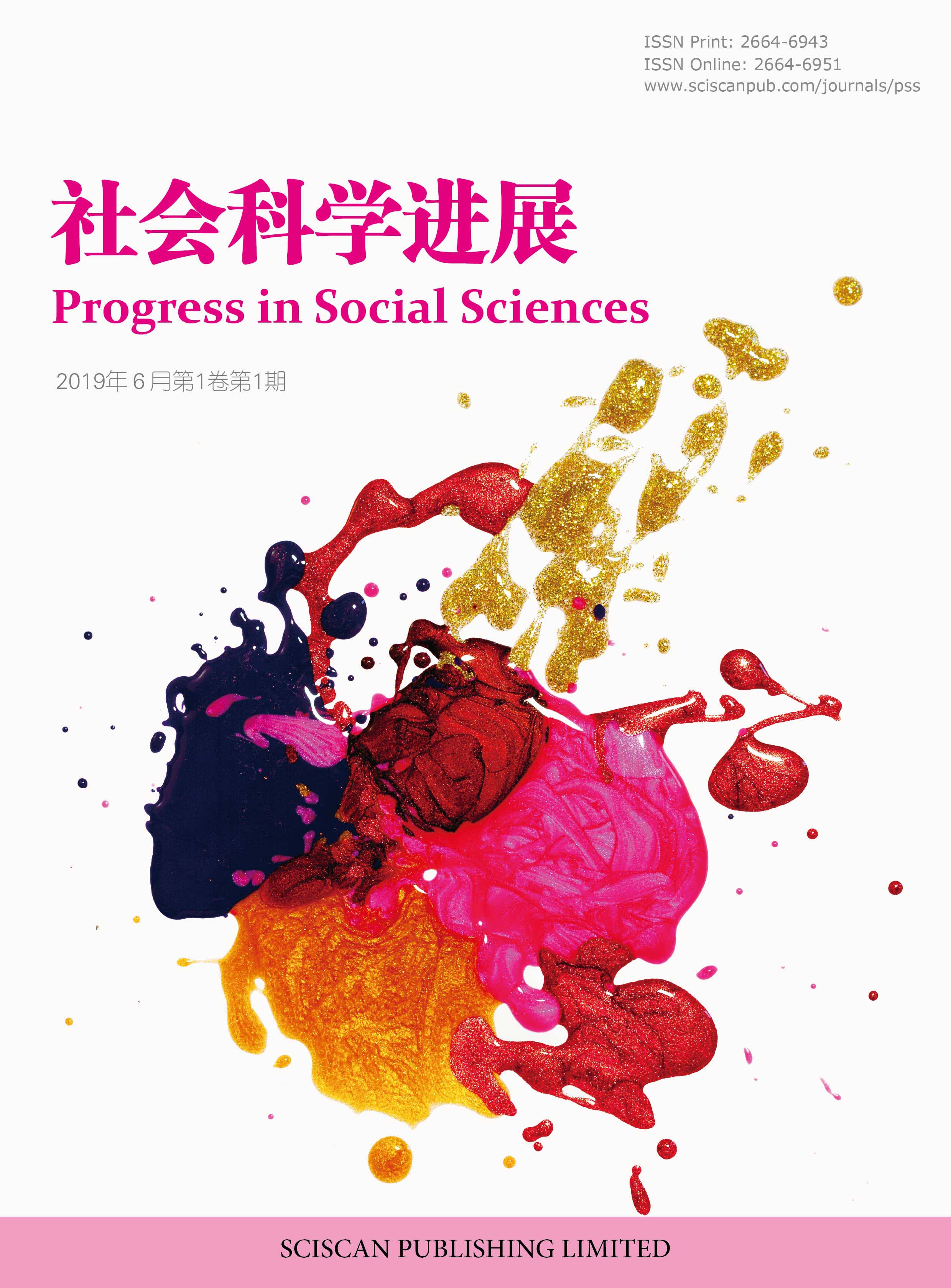Progress in Social Sciences
日本本科教育通专融合的模式及特色——以东京大学和东北大学为例
Patterns and Characteristics in General-specialized Integration of Japanese Undergraduate Education —Case Study of Tokyo University and Tohoku University
- Authors: 韩欣宸 杨曈
-
Information:
东南大学外国语学院,南京
-
Keywords:
General education; Specialized education; General-specialized integration; Tokyo University; Tohoku University通识教育; 专业教育; 通专融合; 东京大学; 东北大学
- Abstract: Against the backdrop of globalization and the knowledge economy, the integration of general education and specialized education (known as “general-specialized integration”) has become a key direction in higher education reform. This paper reviews the development of general education policies in Japan since the 1991 “Curriculum Guidelines Reform”, analyzing the policy orientation and societal motivations behind promoting this integration. Using the University of Tokyo and Tohoku University as case studies, it provides an in-depth comparison of two integration approaches, the “2+2” model and the “wedge-shaped” model. The former emphasizes broad exploration and personal development in early-stage general education, while the latter focuses on systematic construction and progressive deepening of the disciplinary core. This study examines the similarities and differences between the two universities in terms of educational philosophy, curriculum structure, faculty allocation, and evaluation systems, noting that while the models differ in form, both treat specialized education as the main axis with general education as a supporting framework, reflecting a shared goal of cultivating multidimensional, interdisciplinary talent. Both universities emphasize diversity and interdisciplinary learning in their curricula, integrating innovation skills and critical thinking, while also establishing multi-stakeholder evaluation mechanisms. Finally, the paper suggests that China, in advancing its own integration reforms, should draw lessons from Japan’s experience by strengthening the transition between high school and university, optimizing curriculum structures, enhancing interdisciplinary development, and establishing diversified evaluation systems—all aimed at improving students’ comprehensive competencies and future competitiveness. 在全球化与知识经济背景下,通识教育与专业教育的融合(通专融合)成为高等教育改革的重要方向。本文回顾了日本自1991年“大纲化”改革以来通识教育政策的发展,分析其推动通专融合的政策导向与社会动因。以东京大学与东北大学为案例,深入比较了“2+2”模式与“楔形”模式两种融合路径。前者强调前期通识教育的广泛探索与个性发展,后者则注重专业主干的系统构建与逐步深化。本研究从教育理念、课程结构、师资配置、评价体系等方面分析两校在通专融合上的异同,指出两种模式虽形式不同,但均以专业教育为主轴、通识教育为支撑,体现出多维复合型人才培养的共通目标。两校课程普遍强调多样性与跨学科性,注重创新能力与批判思维培养,并配套建立了多元参与的评价机制。最后,本文提出中国在推进通专融合改革时应借鉴日本经验,注重高中与大学的衔接,优化课程结构,强化跨学科建设与多元评价体系,提升学生综合素养与未来竞争力。
- DOI: https://doi.org/10.35534/pss.0707103
- Cite: 韩欣宸,杨曈.日本本科教育通专融合的模式及特色——以东京大学和东北大学为例[J].社会科学进展,2025,7(7):609-617.
1 引言
中日两国的高等教育体系均深受欧洲模式影响,侧重于专业教育。1946年后,美国哈佛大学的“general education”理念被引入日本,推动了日本高等教育改革。在日本,通识教育早期被译为“一般教育”,1991年后逐渐使用“教养教育”或“全学教育”等术语,几种概念在细节上存在差异,但其核心均在于与专业教育形成互补。[1]而中国为了弥补中等教育阶段因应试教育及理工科教育侧重所导致的人文教育不足,自20世纪90年代初开始强调高等教育阶段文化素质教育的重要性,并于1995年前后从美国引入了通识教育、博雅教育的概念。之后,中国大学以通识教育为中心的课程改革正式拉开帷幕。在2016年的《中华人民共和国国民经济和社会发展第十三个五年规划纲要》中正式提出了通专融合这一政策要求。在政策的引导下,北京大学、复旦大学等高校已开展20余年探索,但其模式尚存局限。为实现培养高素质人才、建设世界一流大学的目标,深化通专融合势在必行。反观日本,自1946年引入通识教育以来经历多次改革,体系已趋成熟,东京大学、东北大学等成功案例受人瞩目。此外,鉴于本文聚焦于解决21世纪中日通识教育与专业教育之间的关系发展,为便于讨论,统一采用“通识教育”这一术语。
关于日本通识教育的研究可归纳为三大类。第一类通过梳理政策、历史等方式,分析通识教育在日本的历史演变乃至全球的发展历程。第二类以日本具体大学为案例,深入探讨其通专融合的实践措施。特别是东京大学等名校的课程设计与组织机构设置成为研究焦点。第三类研究通过对比分析日本多所大学或日本与其他国家大学之间的通专融合模式。其中,日本国内大学的模式主要归纳了“2+2”型和“楔形”两种。[2]然而,这三类文献都存在相似的问题,即单一研究通识教育而缺乏对通专融合的深入探讨,虽较详细地介绍了背景、发展等但多停留在历史性的整体概述,未能及时反映近年来的改革动态。且因评价标准缺失,比较对象的选择也相对有限,难以全面评估不同模式的优劣。因此,针对现有文献的不足,本文聚焦于“2+2”型与“楔形”的教育模式,选取东京大学和东北大学为典型代表,以通识教育实施的前提条件——教育理念、师资和组织机构为切入点,深入分析两校通识教育在课程结构和内容上的设置现状,并结合通识教育的评估方式与教学成果,探索两校通专融合的融合路径。通过此研究,旨在揭示通识教育与专业教育的平衡点,借鉴日本经验,优化我国教育改革路径,助力高质量人才培养与世界一流大学建设。
2 日本本科通识教育政策历程——从分离到合作(1991年起)
日本大学管理采用政府主导的顶层设计模式,各校在文部科学省指导下灵活改革。探究其1991年起近三十年的通专融合政策,可把握大学课程改革全貌。
2.1 改革的开端:1991年的大纲化改革
1991年,文部科学省对《大学设置基准》实施大纲化改革,开启通识教育新纪元。当时日本泡沫经济破裂,经济低迷,人口老龄化加剧使大学入学适龄人口减少,而高校数量增加,同时科技进步、产业变革和市场需求多样化,企业更看重快速适应与独立解决问题的能力,教育界认识到仅靠专业教育难以培养这些能力。[3,4]此前日本沿用的美国“一般教育”因与本国教育体系不匹配及理念理解偏差,导致通专矛盾加剧,后期一般教育比重被大幅削减。大纲化改革后,通专融合成重心,课程设置不再有明显区分,相互渗透,界限渐模糊。一方面课程注重技能培养,为新生提供外语、计算机等技能类补习课程;另一方面教育体制趋向自由化,高校教养部陆续撤销,通识教育课程任务分散到各学院和教师,专业教师也承担通识教育职责。[5]
2.2 改革的停滞期(1991—2002年)
此阶段追求教育公平,普及高等教育成效显著,但1992年后18岁人口骤减,高等教育入学率持续增长,教育供需关系逆转,通识教育功能变为高中至大学的桥梁,帮助提升新生专业知识。政府对通识教育提出“能力培养”要求,却模糊且不切实际,对课程和方法无明确规定,能力也无法客观测定,导致通识教育范畴无明确界限,逐渐被“轻视和形式化”。[6,7]许多大学将“能力培养”等同于专业教育所需基础技能,出现通识教育学分减少,英语、信息技术或与专业相关技能类课程增加的趋势。不过这一时期通专融合仍有初期探索,中央教育审议会连续发布五份相关报告(a),高等教育普及化成为推动动力,只是学院中心结构中通识教育的作用问题未解决,实践方式和理念目标待探索。
2.3 改革的成熟期(2003年至今)
历经近十年的改革停滞期,直至2002年《关于新时代的通识教育的存在方式》咨询报告问世,首次系统性地聚焦通识教育,明确了通识教育的定义、目的与路径,强调教养是综合素养,新时代教养需具备全球视野等以应对未知挑战,旨在通过通识教育弥补专业教育不足等。[8]《关于本科课程教育的构建》(2008)咨询报告提出“学士力”概念,明确本科教育以通识教育为主,后续政策多围绕此展开。此阶段改革核心是清晰界定通专职责,专业教育侧重知识传授,通识教育聚焦“问题探索能力”,且二者虽分工不同,却共同承担育人重任,尤其在全球化背景下需培养学生多元能力。2008年后咨询报告不断完善通专融合体系,形成以“学士力”为基调、通专融合为核心的改革浪潮。
2.4 1991年之后的通识教育政策对大学改革的影响
1991年之后的通识教育政策对大学改革影响显著。尽管通识教育学分缩减,但占毕业总学分约30%,地位重要,教育界也深化了对其重要性的认识。大学教育理念转变,“学士课程”概念取代“学部”观念,从简单结合通专教育转向构建贯穿四年的综合性课程体系,淡化二者界限,关注有机融合。课程设置上,东京大学采用“2+2”分段式,其余大学多采用“楔形”模式,分“前通后专”型和通减专增型。组织机构层面,多数大学设专门机构统筹通识教育,少数保留教养部,多数废除并代之以多样化形式,如东北大学的教育教养院,便是在全校教育委员会基础上重构的产物。[9]各大学通识教育均有“专业化”倾向,课程由学院主导,侧重实用技能,一定程度遏制其发展。但随着社会全球化,通识教育重要性凸显,能弥补专业教育缺失,专业教育也推动通识教育革新,大学正探索协同机制,通专融合成教育改革核心导向。
3 “2+2”通专融合改革——以东京大学为例
东京大学(后文简称为“东大”),是日本国立高等教育的翘楚,作为日本历史最悠久的学府,东大在1991年的大纲化改革后,设立了教养部专门实施通识教育,并独树一帜地采用了“2+2”教育模式。本节旨在剖析东大实现通专融合的要素——包括教育理念、师资配置、课程体系及内容设置[27],结合实际成效,以探索通专融合的有效路径。
3.1 通专融合的前提条件
1949年,东大创立时便设立教养学院作为独立院系。20世纪90年代,在其他大学废除教养“部”的情况下,东大教养学院开展课程改革,坚守传统通识教育的同时,承担起学生的前期课程教育。2011年进行大规模重组,将课程分为文科、文理融合、理科三类。[10]通识教育作为全校性前期课程,由教养学院实施。东大全体学生前两年在驹场校园统一接受前期课程的通识教育,之后选择后期专业,并迁至相应校区。
东大的通识教育理念强调开阔视野和培养多种能力。首任校长矢内原忠雄提出在培养探求真理精神的同时,开展通识教养的教育理念。基于此,东大教养学院于1991年确立了对通识教育的基本态度,东大师生逐步认识到通识教育对培养学生的学习欲望、宽广视野和应用能力具有重要作用。[11]1993年,东大对前期课程进行根本性改革,旨在超越专业壁垒,将基础知识学习和广泛能力的培养有机结合,以便俯瞰应对现代社会所面临的各种问题。[12]
从师资角度看,东大教职员人数逐年增加,且相较于其他大学,有聘用大量临时教师的倾向。2020年至2023年东大教职员人数增加了近600人,其中短期雇用教职工增加了100余人。2023年教养学部教职工总数为2283人,其中专任教师387人,短期雇佣教职工为1896人。[10]教职员人数的增加能带来多学科领域的专业知识和经验,充实学院的课程和教育计划,助力通识教育发展。学生也能够以更广泛的视野学习,并根据自身兴趣进行选择。
简言之,东大注重培养学生的综合能力与开阔视野,强调通专融合,意在激发学生的求知欲,拓宽其视野并增强灵活应用能力。为此,教养学院从各个学科增聘专任教师,提供超过300门课程,优化课程体系与教育规划,提升通识教育质量,确保学生获得全面而深入的知识与技能。
3.2 课程结构与内容
东大通专融合的课程框架是“2 + 2”型模式。前两年统一实行通识教育,使学生获得一定基础知识和学习能力;后两年学生可选择专业,进入不同学院学习精深的专业知识。[13]与一般大学不同,东大将学生前两年的课程分为文科和理科两类。由教养学院负责前期课程。学生在后两年进入专业学院开始专业课程学习。大二秋季选择专业,成绩虽为决定因素,但学生可根据兴趣调整。这种制度被称为“横向分配”或“后期专业教育”。东大的通识教育主要针对大一和大二学生,在他们决定专业前提供通用课程。学生利用前期课程掌握广泛知识和基础学习能力,在后期课程自主选择自己感兴趣的专业领域。[12]

图 1 东京大学的后期专业教育模式[12]
Figure 1 The late specialization of of Tokyo University
前期课程旨在培育学生全面的判断力和多元视角,避免过度专业化,以人文教育为核心,通过促进个体认知的开放性和深度,打破学生认知局限、摆脱传统束缚与偏见,鼓励思想真正独立。因此,课程广泛涵盖社会、人文、自然等多个领域,核心在于强化逻辑思维与灵活应变能力的训练。前期课程开设基础课、拓展课、综合课、主题课四种,基础课为专业教育和通识教育提供基础知识,综合课和拓展课在此基础上进行能力拓展、组合运用,最终引导学生通过主题课进行高深学问的学习。这些课程各自发挥作用,支撑着通识教育和专业教育的相互关联,形成综合教育系统。[13]
以经济学专业为例,该专业主要面向文科类学生。前期,学生需系统完成基础课和综合课两大模块的学习。基础课包含数学类、英语、人文科学、社会科学等全校统一开设的公共必修课;综合课涵盖6大领域,基本覆盖后期专业所需要的专业基础知识,并补充拓展知识。课程体系采用“必修+限定选修+自由选修”的三层架构。对于计划进入经济学院的学生,必须在限定选修课中完成部分专业基础课程,这些课程的学分与成绩将作为专业准入的重要考核指标。后期,在满足专业基础课程要求的前提下,学生可结合个人发展方向,在拓展课程群中选择进阶专题课,或在主题课程群中选修前沿讲座等实践型课程。这种弹性化的课程体系既保证了专业培养的系统性,又为学生在各细分领域的个性化发展创造了空间。[14]

图 2 东京大学四类课程的作用[13]
Figure 2 The role of 4 courses at the Tokyo University
综上,东京大学通过通识教育帮助学生奠定基础,培养基础的学术素养和核心能力,再通过专业教育深化拓展学生的专业知识和兴趣领域,实现学生的个性化发展。整体课程结构呈现“金字塔”结构,通识教育与专业教育紧密配合,助力学生实现自身的向上发展。
3.3 教育评价方法与改革成效
东大的通识教育课程评价系统由机构认证评价、大学整体的自查自评及学生评价三个方面组成。
2005年起,东大接受“大学评价与学位授予机关”的外部评价,并设立负责全校评价的评价委员会。该机关每7年对教育研究、组织运营、通识教育高度化机构的综合状况进行审查,并制定《评价报告书》。[15]作为日本唯一拥有教养学院的大学,东大高度重视对通识教育的评价。根据过往评价报告书,东大在前期课程中实施2年的通识教育,对课程设置的广度、国际性、多样性、学生培养成效等多个方面进行评教,且把通识教育高度化作为高等教育发展的重要特征。外部评价的各项指标从宏观层面提供方向性指引,通过与其他院校的横向比较,帮助学校识别并弥补自身不足。
在自查自评体系中,各学院根据大学评价标准制定《自我评价表》[16],综合各学院的课程编制、学习环境、教育过程和学习成果等数据进行自我评价。由政府和大学组织的上述评价项目,对通识教育单独进行实施层面的指导和监督。相较于外部评价,自查是学校对教学活动实施内部监督的重要机制,立足学校自身实际精准识别问题并加以改进,推动自我完善与可持续发展。
从2001年开始,东大在各学期末施行“学生课堂问卷”,尤其是教养学院自2008年起,每年对前期课程的结业学生进行“通识教育满意度调查”。[17]该调查问卷从学习成果、课程设施、升学动机、综合评价四个方面收集学生评价。多年调查结果显示,多数学生对教养学院的教育表示满意。在学习成果方面,多年有约60%~70%的学生对通识教育进行高度评价,表示其综合能力,例如逻辑思维和分析能力、独立行动能力,以及自主发现和解决问题能力等都有所提高。此外,80%以上的学生希望升学,这说明教养学院的教育帮助培养了学生的科研能力和学术精神。相较于其他日本大学约10%的硕士阶段平均升学率,东京大学以高达50%的升学率和30%的就业率脱颖而出。[18]在日本这样一个企业更重视内部培训和员工年龄年轻化的国家,东大学生仍能主动选择升学或合理规划自身的职业道路,通识教育在提升学生决断力和学习动力上发挥了重要作用,也体现了东大在本科精英培养上所采取的是通才策略而非专家型培养。
4 “楔形”通专融合改革——以东北大学为例
东北大学是日本历史最悠久的大学之一,1993年根据文部科学省的方针,废除教养部,实施通识教育,并2008年设立教养教育院,进行更全面及前沿的通识教育。在同样实施楔形教育课程的大学中,东北大学成立了独立的教养研究院,拥有丰富的通识教育研究资源和史实资料,同时其课程结构属于前通后专型,与中国大学的结构相似,更符合中国大学的情况。故本研究以东北大学为案例,对通专融合的前提条件、课程设计、改革效果等进行分析,以期从中提炼通专融合的结合的关键。
4.1 通专融合的前提条件
东北大学以“以研究为中心”和“门户开放”为办学理念,在培养科学人才的同时,愈发注重学生“教养”培养,致力于将研究成果用于解决社会问题、培养领导型人才,为实现和平公正的人类社会贡献力量。本科教育目标是培养兼具丰富文化修养与人格,怀抱“科学之心”主动探究知识,且能站在全球视野发挥专业能力、承担领导和核心作用的人才。相较于东京大学,东北大学在理念上更侧重知识的应用和问题解决能力的培养,这也成为其通专融合的切入点。
东北大学秉持培养全面人才的教育理念,设置教养教育院这一单独管理全校通识教育的机构,负责合理分配通识教育教学任务给教师。依据文部科学省的大学设置标准,东北大学废除了教养部,开启通专融合的本科教育改革。针对通识教育的变化,校长提出相应理念,通识教育机构也进行了诸多改革。[19]表1反映了东北大学通识教育机构和理念的变化路径。自1993年通识教育作为独立领域设立后,其覆盖范围逐步扩展,后期还与生涯教育、心理教育等学生援助领域协同联动,全面支持学生的多样发展。
表 1 东北大学的通识教育机构及其理念变化
Table 1 The change of the idea and general education institution of Tohoku University
| 时间 | 机构名称 | 作用 | 校长理念 | 改革方向 |
| 1993 | 大学教育中心 | 承担通识教育 | 无 | 无 |
| 2004 | 高等教育开发推进中心 | 设计课程与实践、提高教师能力、改善教育方法 | 无 | 设立通识教育改革探讨委员会,针对教育本身进行改革探索 |
| 2008 | 教养教育院 | 与教师广泛合作实施前沿的通识教育 | 井上计划2007 | 再次强调“研究中心型大学”通识教育的重要性 |
| 2014 | 高度教养教育与学生援助机构 | 通识教育与学生援助的调查研究、开发企划与实施 | 里见蓝图 | 创造能够在国际社会活跃人才的成长场所 |
| 2018 | 高度教养教育与学生援助机构 | 通识教育与学生援助的调查研究、开发企划与实施 | 东北大学蓝图2030 | 致力于具备前沿创造力的国际人才的培养 |
在体制层面,东北大学与东大不同,负责通识教育的教师隶属于各学院,同时受教养教育院统一管辖。教养教育院实施校长特命教授制度和通识教育特任教员制度,校长特命教授由校长从退休大学教授中返聘,具备卓越教育能力,为全校学生提供前沿拓展性教育;通识教育特任教员由对通识教育有热情和优秀能力的教养教育院教师担任,负责全校通识教育项目。学院教师与校长特命教授联合授课,开设“通识教育特别研讨会”,分享学术经验与见解,引导学生跨学科探索,让学生有机会与顶尖学者面对面交流,获得启发性教育体验。[20]教师除承担心理、生涯等非专业性教学任务外,还积极参与通识教育课程开发、教学创新及跨学科教育推进工作。在东北大学通识教育体系中,各学院教师承担多数与专业相关的通识教育课程,教养教育学院提供拓展课程,高度教养教育与学生援助机构进行顶层设计,统筹管理全校课程安排和活动。在此规划下,学院专业教师能从与专业衔接的视角开展通识教育,特任教员可从心理、职业技能等多方面补充教学,将通专教育相联系,支持跨学科通识教育和学习,全面提升学生多方面能力,实现全面发展。
4.2 课程结构与内容
与东京大学不同,东北大学学生入学时即确定专业。不同专业与学院的进修计划不同,但基本要求毕业学分的三分之一用于修读通识教育课程。本科课程分为“通识教育课程”和各学院的“专业教育课程”,通识教育全部在川内北校区进行,以1、2年级学生为中心,面向全校学生,课程比例随学年升高逐渐减少。[21]

图 3 东北大学本科教育中通识教育的比例[21]
Figure 3 The proportion of general education in Tohoku University’s undergraduate education
如图3所示,从2021年开始,东北大学的全校教育课程从三种重组为四种,增加了课程数量,重新分类了对象课程,选修方法包括必修、限制性选修和自由选修[22]。
2022年起全校教育分成四类。“基础课程类”是将原来的“主干课程”和“展开课程”综合精简后的新课程群,其中新设“学问论”课程,鼓励学生主动理解各领域科学的基本概念,探究科学方法,而非被动接受知识,为专业教育奠定基础,提供必要的基础学习能力和技能。“语言课程类”要求学生选择一门外语以应对全球化。“学术基础课程类”侧重培养学生基础学习能力,“前沿课程类”聚焦创新和尖端科学技术,这两门课不局限于纵向划分学术领域,积极提供跨领域探索知识的机会,鼓励学生跨越传统学科界限,实现知识融合与创新,强化通专融合。[23]
东北大学的通识教育体系在改革前采用纵向划分三大领域(人文、社会、自然科学)加技能类课程(侧重外语及实践技能)的模式,改革后更注重各学科领域间的内在联系,在保留原有技能类课程的基础上,按通识教育功能将其余课程分为包含传统三大领域的通识基础知识类和专业教育衔接类(包含学术基础与前沿知识两大方向)。其中,专业教育衔接类是通专教育紧密结合的关键。改革前的课程缺乏明确的通专衔接机制,未充分强调学科交叉;改革后的课程设计在通识教育中融入与专业教育衔接的文理基础知识及学科交叉内容,前者为后续专业学习奠定坚实基础,后者促进学科交叉融合与创新思维培养。

图 4 东北大学全学教育课程的改革[23]
Figure 4 The change of the education curriculum in Tohoku University
4.3 教育评价的方法和改革的成果
东北大学同样采用综合评价体系,从学生、学校、外部评价机构三个角度分析全校教育的实施效果。
从2020年开始,东北大学接受各大学机构认证评价审查。国立大学法人评价委员会和大学改革支援与学位授予机构进行测评,在评价结果报告书中,东北大学的通识教育获得高度评价。此外,英国《泰晤士高等教育》(THE)公布的“THE日本大学排名”中,东北大学连续四年排名第一,尤其在教育全球化和均衡性方面评价颇高。外部机构的评价有助于学校掌握应持续的成果和需改善之处。
东北大学从2005年开始实施部门评价制度,以社会需求为导向设定评价指标,基于执行委员会严格的评价结果推进合理的资源分配。通过总结各部门一年的成果,发现目前教育模式的不足和未来方向,强化自我检查与评价功能,有效落实通识教育管理,提高大学整体课程质量[24],使通识教育课程设置更贴近社会和企业需求。高度教养教育学生支援机构设立了教育评估中心,在其年度评估报告《迈向卓越的教育研究型大学》中,将通专融合列为重要评估项目。2023年的评价报告明确提出“要通过开展教养教育并推动通专融合来实现教育质量的提高”,为此,东北大学在2023年逐步推进教育数字产业化、教育研究问题现代化和研究生教育的全面化、高度能力化。[25]
再者,东北大学从2001年开始实施“通识教育授课问卷”。每学期末实施问卷调查,结果包含数据统计和自由记述,以匿名形式报告给各授课教师。大学校长和评估中心教师参考问卷调查结果,分析大学教育状况,讨论改革计划调整方案。问卷内容包括学习意愿、授课内容、课后学习时间、学习收获等,还定期汇总对全校教育的意见。[26]通过倾听学生提出的意见以提高学生的学习积极性,也有利于导师更合理地安排课程内容。
5 结论
本研究以东京大学“2+2”型模式和东北大学“楔形”模式为例,剖析日本大学通专融合改革。东京大学“2+2”模式强调个性发展,初期提供广泛通识教育选择,利于提升综合素养,但存在专业基础不牢、职业方向模糊等风险;东北大学“楔形”模式以专业为中心,循序渐进引导学生深入专业领域,利于提高就业竞争力,却可能限制跨学科和创新思考能力。本文考察了两所大学的通识教育模式,并根据以下比较标准对两所大学进行了比较。
表 2 两种模式的比较基准
Table 2 The comparison basis of the two models
| 项目 | 子项目 | 标准 |
| 前提条件 | 教育理念 | 广度、是否反映了通识教育理念 |
| 机构 | 是否完备、对通识教育的管理作用 | |
| 师资 | 构成、多样性 | |
| 通识课程 | 结构 | 与专业教育的衔接性 |
| 内容 | 广度、多样性 | |
| 评价系统 | 角度 | 是否多角度 |
| 内容 | 广度、多样性 |
两所大学均重视通识教育,并依此设立组织机构、推进课程改革。东京大学教育理念是“掌握专业基础知识的同时获取全面知识,激发追求真理的精神”;东北大学以“培养领军人才”为目标。二者通识课程均聚焦多样性与跨专业性,鼓励学生结合专业背景探索兴趣领域,涵盖各领域基础知识,增设实验、心理、前沿学术等课程,全面提升学生基本素养与综合能力。
在通专融合方面,两所大学均将专业基础内容和学科交叉内容融入通识教育,为专业学习奠基并拓展宏观思维;同时提供多样化学科交叉及前沿课程,强调批判性思维、创造力和解决实际问题的能力。两种模式本质上都坚持“以专业教育为主干,以通识教育为支撑”,体现“根基扎实、主干稳固、枝叶多元”的人才培养目标,只是各有侧重:东京大学为“泛根泛叶”模式,以通识教育为根基汲取多领域知识,专业教育为主干延伸多元发展路径,突出个性与多领域创新;东北大学以专业教育为主线,逐层构建稳定专业发展路径,虽限制横向拓展,但实现特定领域高度专业深耕与系统化训练。此外,两校均构建学生、校方及外部第三方共同参与的评价系统,保障通识教育实效,使其科学回应学生需求、契合学校理念。

注:由笔者制成。
图 5 东京大学与东北大学的通专融合结构对比
Figure 5 Comparison of general-specialized integration structures between the Tokyo and Tohoku University
对中国大学改革而言,应借鉴日本经验,推动通专融合,注重高中教育与大学教育衔接,着力培养学生的宽泛综合素养。在此基础上,通过促进课程多样性与跨学科交叉,激发学生的探索精神和创新能力,提高其未来的就业竞争力。同时,需根据专业特色合理分配专业教育和通识教育的比例,形成有所侧重、协调发展的课程结构。此外,还应建立由内至外的多元评价体系,确保教育质量持续提升并真正落地实施。最后,应充分结合我国国情,积极整合社会资源,通过引入多样化师资和推进产学合作项目,切实提升学生的问题解决能力和社会适应能力,为其全面发展奠定坚实基础。
参考文献
- 羽田貴史.大学における教養教育の過去・現在・未来[J].東北大学高度教養教育・学生支援機構紀要,2016(2):47-60.
- 刘爽,李曼丽.日本大学之通识教育变革(1991-2015):进步抑或倒退——七所综合性基干大学改革与实践的回顾与反思[J].清华大学教育研究,2016,37(1):39-46.
- 吉田文.日本の一般教育・教養教育 :導入したものとできなかったもの[J].IDE :現代の高等教育,2019(610):9-15.
- 刘业青,王可,林杰.日本通识教育的两次转向:从通专并行到通专融合[J].江苏高教,2022(9):49-61.
- 杨曈,吉田文.日本大学通专结合的三十年探索及启示[J].外国教育研究,2022,49(1):110-128.
- 21世紀を展望した我が国の教育の在り方について[EB/OL].[2024-05-08].https://www.mext.go.jp/b_menu/shingi/chuuou/toushin/970606.htm#02.
- 奥正廣.日本の教養教育の過去・現在・未来[J].日本創造学会論文誌,2020(23):1-35.
- 新しい時代における教養教育の在り方について[EB/OL].[2024-05-08].https://www.mext.go.jp/b_menu/shingi/chukyo/chukyo0/toushin/020203/020203a.htm#02.
- 史媛媛.日本大学教养教育改革中的课程和组织——中日比较的视角[J].外国教育研究,2015,42(3):75-85.
- 東京大学の概要2023[Z/OL].[2024-05-08]. https://www.u-tokyo.ac.jp/content/400216850.pdf.
- 大学院総合文化研究科・教養学部の歴史-総合情報-総合情報[EB/OL].[2024-05-08].https://www.c.u-tokyo.ac.jp/info/about/history/development/index.html.
- 鈴木賢次郎,山本泰.東京大学における教養教育の評価と課題[J].大学評価・学位研究,2005(1):53-64.
- 東京大学の学位授与方針・教育課程の編成・実施方針[Z/OL].[2024-05-08].https://www.u-tokyo.ac.jp/content/400186495.pdf.
- 2024年度東京大学経済学部履修案内[Z/OL].[2025-01-18].https://www.student.e.u-tokyo.ac.jp/gakubu/rishuinf2024.pdf.
- 令和4年度実施大学機関別認証評価評価報告書 東京大学.令和5年3月令和6年3月追記[Z/OL].[2024-05-08].https://www.u-tokyo.ac.jp/content/400212077.pdf.
- 自己評価書.東京大学.令和4年6月[Z/OL].[2024-05-09].https://www.u-tokyo.ac.jp/content/400224300.pdf.
- 教養教育の達成度についての調査 - 総合情報 - 総合情報[EB/OL].[2024-05-09].https://www.c.u-tokyo.ac.jp/info/about/assessment/index.html.
- 東京大学の概要 資料編2023[Z/OL].[2024-05-09].https://www.u-tokyo.ac.jp/content/400223323.pdf#page=13.
- 沿革-東北大学 高度教養教育・学生支援機構[EB/OL].[2024-05-09].https://www.ihe.tohoku.ac.jp/?page_id=693.
- 東北大学教養教育院紹介[EB/OL].[2024-05-09].https://www.las.tohoku.ac.jp/about.
- 朱光俊.日本东北大学本科教学与管理[J].重庆科技学院学报(社会科学版),2009(2):193-194,203.
- 喻旭兰,赵文力.中日通识教育的比较研究——以日本东北大学和中国湖南大学为例[J].保险职业学院学报,2010,24(1):90-94.
- 東北大学の全学教育科目履修の手引(2024)年度6_03-1.pdf[Z/OL].[2024-05-08].https://www2.he.tohoku.ac.jp/center/keiji/info/r06_03-1.pdf.
- 自己点検・評価[EB/OL].[2024-05-08].https://www.bureau.tohoku.ac.jp/hyoka/03/bukyokuhyouka.html.
- 令和5年度 評価年次報告『卓越した教育研究大学へ向けて』[Z/OL].[2024-05-08].https://www.bureau.tohoku.ac.jp/hyoka/03/07/nenji/R05/25_koukyou_r05_report2_r04.pdf.
- 東北大学全学教育 授業アンケート結果概要[EB/OL].[2024-05-10].https://www2.he.tohoku.ac.jp/zengaku/zengaku_eq_g.html.
- Blenkin G M,Edwards G,Kelly A V.Change and the Curriculum[M].London:P.Chapman,1992.
















